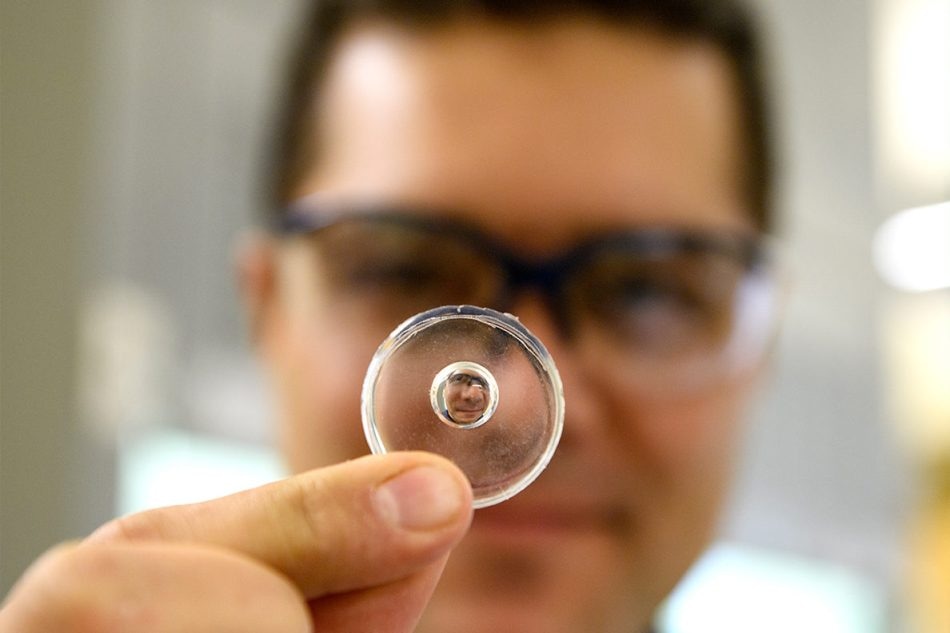May 21 2019
Scientists at Washington State University and Ohio State University have created a cost-effective and simple method to create custom lenses that could help manufacturers avoid the expensive molds needed for optical manufacturing.
 Graduate student Mojtaba Falahati holds a homemade lens. (Image credit: Washington State University)
Graduate student Mojtaba Falahati holds a homemade lens. (Image credit: Washington State University)
The scientists headed by Lei Li, assistant professor in the School of Mechanical and Materials Engineering, and graduate student, Mojtaba Falahati, created a liquid mold from droplets that they can maneuver with magnets to develop lenses in various shapes and sizes. Their research appears on the cover of the journal Applied Physics Letters.
High-quality lenses are more and more used in everything from cameras to self-driving cars, and almost all robotics; however, the conventional molding and casting processes used in their manufacturing need advanced and expensive metal molds. Hence, manufacturers are typically restricted to producing one type of lens in large amounts.
The molds are precisely finished and are difficult to make. It isn’t worthwhile to make a mold for low-volume production.
Lei Li, Assistant Professor, School of Mechanical and Materials Engineering, Washington State University
The scientists had trouble firsthand as they looked for lenses for their work to create a portable laboratory reader on a phone.
Initially, they attempted to make their own lenses using 3D printing but it was found difficult to control the lens shape. Later, they proposed the concept of using magnets and the surface tension of liquids to literally develop free-flowing molds.
They placed small, magnetic iron particles into liquid droplets and developed a device to enclose the droplets with magnets. They subsequently transferred the plastic material used in lenses over the droplet. On applying a magnetic field, the droplet took the shape of a conical lens, forming a mold for the plastic lens material. After curing the plastic, it hardened and its optical properties and imaging quality were similar to a commercially purchased lens. The liquid droplet remains isolated and can be used again.
The magnets can be moved to adjust the magnetic field, the shape of the mold, and the resulting lens. The scientists also used bigger or smaller droplets to develop lenses of different sizes.
“We brought the concept of interfacial tension to the field of optics by introducing an innovative controllable liquid mold,” said Li. “This novel process allowed us to regulate the shape of a magnetic drop and to create lenses without having to fabricate expensive molds.”
The National Science Foundation funded the research.